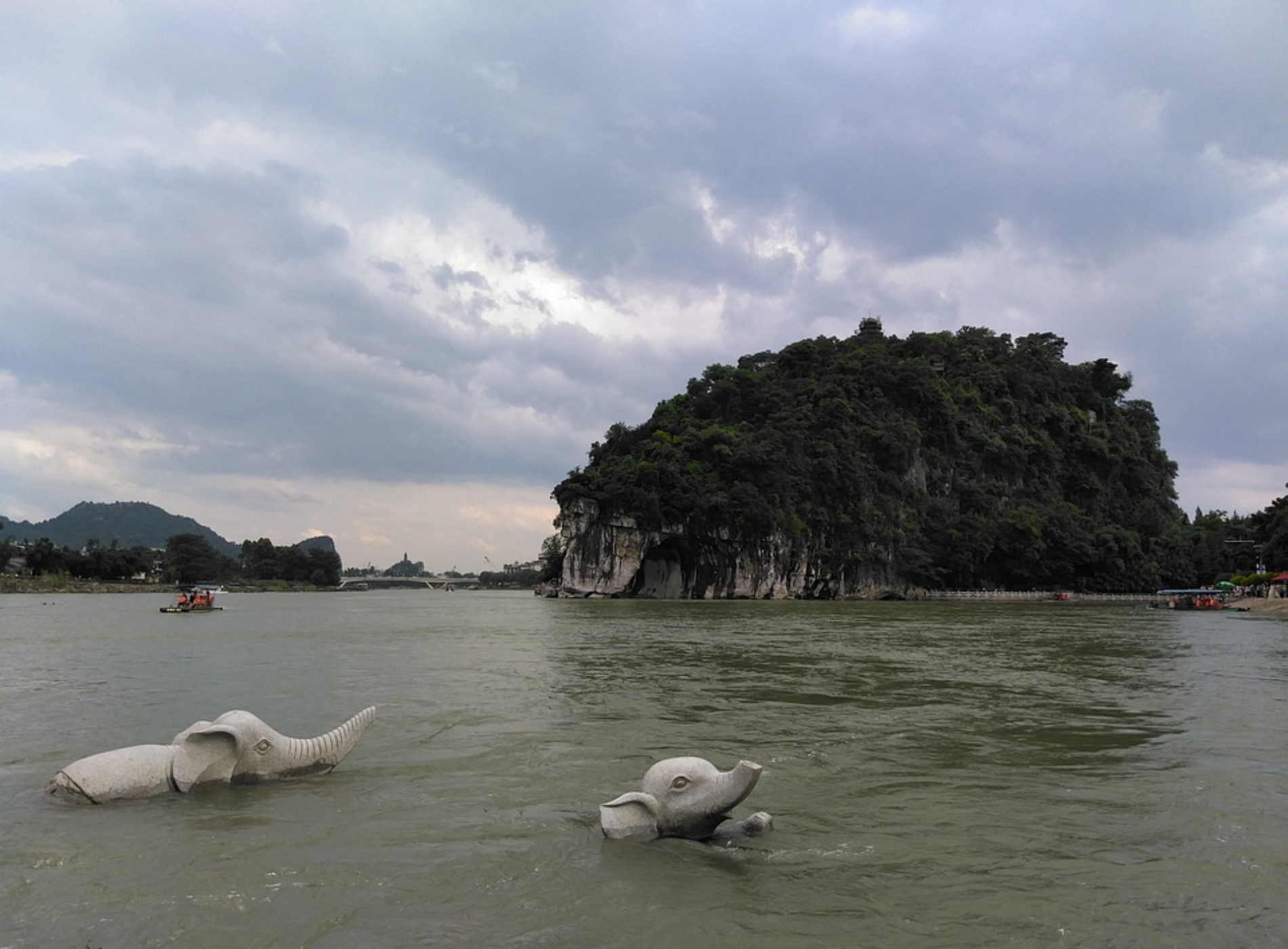Elephant Trunk Hill
Elephant Trunk Hill, is a distinctive and iconic landmark located in Guilin, China. Named for its resemblance to an elephant drinking from the Li River, this natural karst formation has been celebrated in Chinese art and literature for centuries.
The hill itself rises dramatically beside the Li River, with a large arched opening near its peak that resembles an elephant's trunk dipping into the water. This unique formation is a result of erosion and dissolution of limestone over millions of years, typical of the karst landscape that defines Guilin's scenery.
At the base of the hill, visitors can explore Elephant Hill Park, a scenic area that offers various vantage points to admire the hill and its surroundings. One of the most popular spots is Water Moon Cave, which is a semi-circular grotto that pierces through the hill, forming a natural window that frames the river and cityscape beyond.
A steep staircase leads to the top of Elephant Trunk Hill, where a pagoda known as Puxian Pagoda stands. This pagoda, built during the Ming Dynasty, offers panoramic views of Guilin city and the winding Li River, making it a favorite spot for photographers and nature enthusiasts alike.
Elephant Trunk Hill is not only a natural wonder but also steeped in cultural significance. It has been referenced in Chinese literature, poetry, and artwork for centuries, embodying the harmony between humanity and nature that is central to traditional Chinese aesthetics.
Visitors to Guilin often find Elephant Trunk Hill to be a must-visit destination, offering both a glimpse into China's natural beauty and a connection to its rich cultural heritage. Whether admiring the hill from afar or exploring its caves and pathways up close, Elephant Trunk Hill remains a symbol of Guilin's enduring allure and timeless charm.

